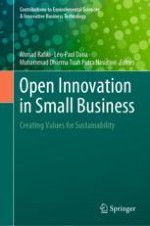The book emphasizes the open innovation which mainly consists of innovation inside-out and outside-in needed by the small and medium-sized enterprises (SME). This open innovation relates to the performance and survival of SMEs in a global competition. The SMEs must learn, have, and do innovative initiatives and actions. This book elaborates all related concepts and innovative practices toward better performances, which includes the impacts of globalization and dynamic markets with a special focus on sustainability. Every country has different perspectives considering open innovation as a solution to the businesses. Thus, readers can see the best practices to be adopted or adapted in their business environment.
The book includes the solution for the SMEs in terms of creating values. Open innovation is known as a window for creating values. Open innovation can be seen by SMEs as a possible way to adapt and thrive in an increasingly competitive and volatile environment, including to overcome their limitations. By implementing open innovation, SMEs will compensate for their lack of internal resources and competencies through external resources to develop new technologies and take advantage of market opportunities.
This book is dedicated to the entrepreneurs, businessmen, practitioners, policymakers, academician, and students in developing strategies and having future plan related to innovation which is crucial for creating values in business operations. A benchmarking through innovation is important to improve among businesses to achieve effectiveness and efficiency.
